Filter by
You must be a CTBUH Member to view this resource.

Burj Khalifa
Burj Dubai
Building
Completed
2010
Office / Residential / Hotel
Steel Over Concrete
828 m / 2,717 ft
163
1
900
304
2957
58
10 m/s
309,473 m² / 3,331,140 ft²
You must be a CTBUH Member to view this resource.
You must be a CTBUH Member to view this resource.
Proposed
Construction Start
Completed
Usually involved in the front end design, with a "typical" condition being that of a leadership role through either Schematic Design or Design Development, and then a monitoring role through the CD and CA phases.
The Design Engineer is usually involved in the front end design, typically taking the leadership role in the Schematic Design and Design Development, and then a monitoring role through the CD and CA phases.
The Design Engineer is usually involved in the front end design, typically taking the leadership role in the Schematic Design and Design Development, and then a monitoring role through the CD and CA phases.
The CTBUH lists a project manager when a specific firm has been commissioned to oversee this aspect of a tall building’s design/construction. When the project management efforts are handled by the developer, main contract, or architect, this field will be omitted.
The main contractor is the supervisory contractor of all construction work on a project, management of sub-contractors and vendors, etc. May be referred to as "Construction Manager," however, for consistency CTBUH uses the term "Main Contractor" exclusively.
Other Consultant refers to other organizations which provided significant consultation services for a building project (e.g. wind consultants, environmental consultants, fire and life safety consultants, etc).
These are firms that consult on the design of a building's façade. May often be referred to as "Cladding," "Envelope," "Exterior Wall," or "Curtain Wall" Consultant, however, for consistency CTBUH uses the term "Façade Consultant" exclusively.
Material Supplier refers to organizations which supplied significant systems/materials for a building project (e.g. elevator suppliers, facade suppliers, etc).
You must be a CTBUH Member to view this resource.
Usually involved in the front end design, with a "typical" condition being that of a leadership role through either Schematic Design or Design Development, and then a monitoring role through the CD and CA phases.
Usually takes on the balance of the architectural effort not executed by the "Design Architect," typically responsible for the construction documents, conforming to local codes, etc. May often be referred to as "Executive," "Associate," or "Local" Architect, however, for consistency CTBUH uses the term "Architect of Record" exclusively.
The Design Engineer is usually involved in the front end design, typically taking the leadership role in the Schematic Design and Design Development, and then a monitoring role through the CD and CA phases.
The Engineer of Record takes the balance of the engineering effort not executed by the “Design Engineer,” typically responsible for construction documents, conforming to local codes, etc.
The Design Engineer is usually involved in the front end design, typically taking the leadership role in the Schematic Design and Design Development, and then a monitoring role through the CD and CA phases.
The Engineer of Record takes the balance of the engineering effort not executed by the “Design Engineer,” typically responsible for construction documents, conforming to local codes, etc.
The CTBUH lists a project manager when a specific firm has been commissioned to oversee this aspect of a tall building’s design/construction. When the project management efforts are handled by the developer, main contract, or architect, this field will be omitted.
The main contractor is the supervisory contractor of all construction work on a project, management of sub-contractors and vendors, etc. May be referred to as "Construction Manager," however, for consistency CTBUH uses the term "Main Contractor" exclusively.
Other Consultant refers to other organizations which provided significant consultation services for a building project (e.g. wind consultants, environmental consultants, fire and life safety consultants, etc).
These are firms that consult on the design of a building's façade. May often be referred to as "Cladding," "Envelope," "Exterior Wall," or "Curtain Wall" Consultant, however, for consistency CTBUH uses the term "Façade Consultant" exclusively.
Material Supplier refers to organizations which supplied significant systems/materials for a building project (e.g. elevator suppliers, facade suppliers, etc).
2010 CTBUH Awards
2010 CTBUH Awards
2015 CTBUH Awards
28 November 2018 - CTBUH Research
4 April 2018 - CTBUH News
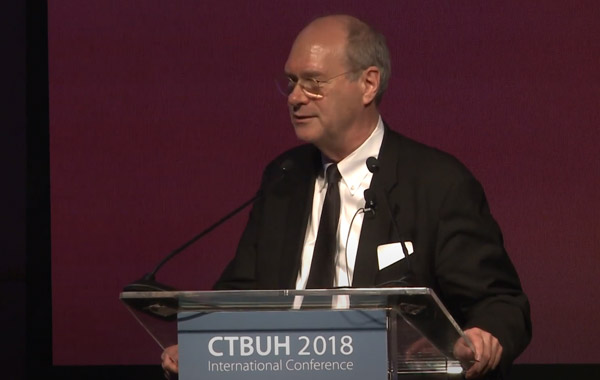
22 October 2018 | Dubai
Since their earliest form, tall buildings have stood as technological marvels, reflecting the latest advancements in materials, methodologies, and tools. These two technologies continue to...
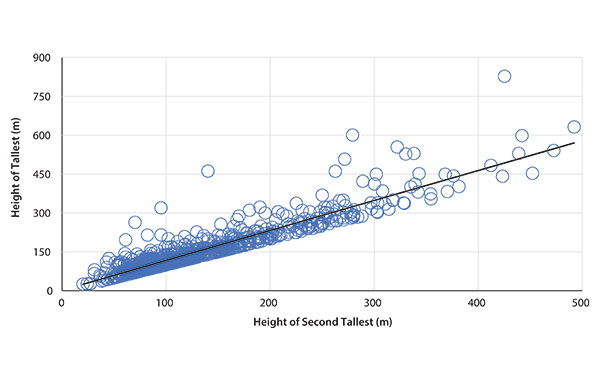
16 May 2023
Jason Barr & Peter A. Weismantle
This paper reviews the development history of record-breaking skyscrapers to better understand their economics. Given how tall they are, the supposed reason for their construction...

30 July 2020
History does not want for dizzying fantasies of tall buildings. From the Tower of Babel onwards, humanity has dreamed of ever-more wondrous skyscrapers, whether we...
Burj Khalifa has redefined what is possible in the design and engineering of supertall buildings. By combining cutting-edge technologies and cultural influences, the building serves as a global icon that is both a model for future urban centers and speaks to the global movement towards compact, livable urban areas. The Tower and its surrounding neighborhood are more centralized than any other new development in Dubai. At the center of a new downtown neighborhood, Burj Khalifa’s mixed-use program focuses the area’s development density and provides direct connections to mass transit systems.
Burj Khalifa’s architecture has embodied references to Islamic architecture and yet reflects the modern global community it is designed to serve. The building’s Y-shaped plan provides the maximum amount of perimeter for windows in living spaces without developing internal unusable area. As the tapering tower rises, setbacks occur at the ends of each “wing” in an upward spiraling pattern that decreases the mass of the tower as the height increases. These setbacks were modeled in the wind tunnel to minimize wind forces. The design of the Tower was significantly influenced by its performance with respect to the wind, in both its shaping and orientation. The building went through many wind tunnel tests and design iterations to develop optimum performance.
The exterior cladding, comprised of aluminum and textured stainless steel spandrel panels, was designed to withstand Dubai’s extreme temperatures during the summer months by using a low-E glass to provide enhanced thermal insulation. Vertical polished stainless steel fins were added to accentuate Burj Khalifa’s height and slenderness.
The unprecedented height of the Burj Khalifa required it to be an innovative building in many ways. Design techniques, building systems, and construction practices all required rethinking, and in many cases new applications, to create a practical and efficient building.
The structural system, termed a “buttressed core,” is designed to efficiently support a supertall building utilizing a strong central core, buttressed by its three wings. The vertical structure is tied together at the mechanical floors through outrigger walls in order to maximize the building’s stiffness. The result is an efficient system where all of the building’s vertical structure is used to support both gravity and lateral loads.
The Tower incorporates numerous enhancements to the fire and life safety systems, including “lifeboat” operation for elevators which allows for them to be used for controlled evacuation under certain situations, decreasing total evacuation time by 45% over stairs alone.
Due to its height, the building is able to utilize ventilation where cooler air temperatures, reduced air density, and reduced relative humidity at the top of the building allow for “sky-sourced” fresh air. When air is drawn in at the top of the building, it requires less energy for air conditioning, ventilation, and dehumidification. The building’s height also generates a substantial stack effect due to the thermal differences between the buildings’ interior and exterior, but Burj Khalifa was designed to passively control these forces, reducing the need for mechanical means of pressurization.
Burj Khalifa has one of the largest condensate recovery systems in the world. Collecting water from air conditioning condensate discharge prevents it from entering the wastewater stream and reduces the need for municipal potable water.
The tower’s management systems utilize smart lighting and mechanical controls which lower operational costs, allow for a more efficient use of building resources and services and better control of internal comfort conditions. Individual electric energy monitoring systems enable energy optimization of the tower’s systems over its lifetime.
With over 185,800 sq m (2,000,000 sq ft) of interior space designed for Burj Khalifa, planning of the building’s interior space began at the earliest stages of its design focusing on three main goals—to recognize and acknowledge the building’s height, to integrate its structural and architectural rationale, and to appreciate the locale’s heritage, history and culture. The interiors of the uppermost floors were designed to reflect celestial influences. This is in contrast to the lower floors, which are inspired by natural elements.
An art program for the Tower was developed in which over 500 individual pieces of art were placed and specified throughout the Tower. The premier featured art piece resides in the tower’s residential lobby. This sculpture, completed by the internationally renowned artist Jaume Plensa, is entitled “World Voices” and is composed of 196 cymbals supported by stainless steel rods rising from two pools similar to reeds in a lake. The cymbals represent the 196 countries of the world and reflect that the Burj Khalifa was a result of a collaboration of many people from around the world.
2010 CTBUH Awards
2010 CTBUH Awards
2015 CTBUH Awards
2020 CTBUH Awards

22 October 2018 | Dubai
Since their earliest form, tall buildings have stood as technological marvels, reflecting the latest advancements in materials, methodologies, and tools. These two technologies continue to...
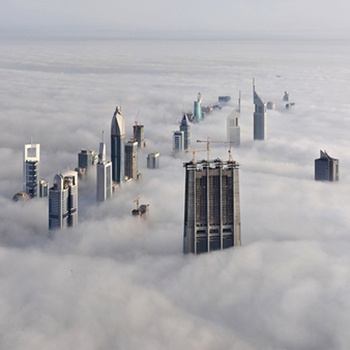
16 March 2017 | Dubai
Thursday, March 16, 2017. Chicago, United States of America. Hosted in collaboration with the Chicago Architecture Foundation, the first lecture of the series Building Tall...

18 October 2016 | Dubai
Tuesday, October 18, 2016. Shenzhen, China. Ron Klemencic, Magnusson Klemencic Associates; Karl Almstead, Turner Construction Company; Andrew Nicholson, CBRE; Jon Pickard, Pickard Chilton; Ian Smith,...

18 October 2016 | Dubai
Jon Pickard of Pickard Chilton is interviewed by Chris Bentley during the 2016 CTBUH China Conference. Jon discusses the local economic impacts of tall buildings.

16 October 2016 | Dubai
Abrar Sheriff of Turner International is interviewed by Chris Bentley during the 2016 CTBUH China Conference. Abrar discusses the planning and construction process for supertall...

12 November 2015 | Dubai
Nicholas Billotti, Chairman, Turner International LLC, discusses the contruction industry with Chris Bentley, during the 2015 CTBUH Awards Symposium at the Illinois Institute of Technology....

26 October 2015 | Dubai
Adrian Smith of Adrian Smith + Gordon Gill Architecture is interviewed by Chris Bentley during the 2015 CTBUH New York Conference at the Grand Hyatt...
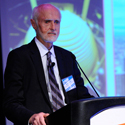
06 November 2014 | Dubai
Peter Irwin, one of the founding partners of Rowan Williams Davies and Irwin Inc. (RWDI), has led wind engineering on many of the world’s tallest...

16 September 2014 | Dubai
Metal claddings frequently skin our tall buildings. They provide the texture and shine that help distinguish one glass tower from the next. Like the fabric...

16 September 2014 | Dubai
Jon Galsworthy of RWDI is interviewed by Chris Bentley during the 2014 CTBUH Shanghai Conference at the Jin Mao Tower. Jon discusses the sustainability of...

16 May 2023
Jason Barr & Peter A. Weismantle
This paper reviews the development history of record-breaking skyscrapers to better understand their economics. Given how tall they are, the supposed reason for their construction...
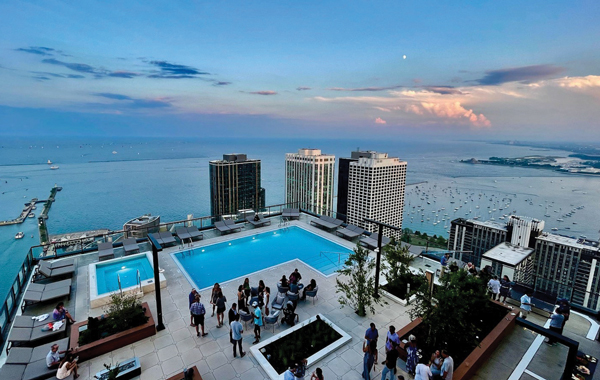
22 August 2022
S. Isaac Work & Shawn Ursini, Council on Tall Buildings and Urban Habitat
Tall building design has diversified and adapted to accommodate increased demand for distinctive amenities at a range of heights. Swimming pools are a classic feature...
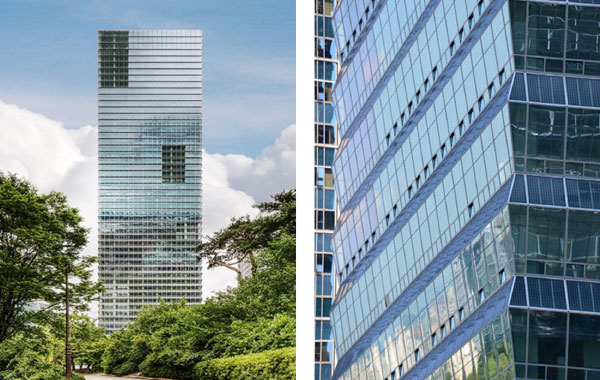
25 June 2020
Sae Hwang Oh, Adrian Smith + Gordon Gill Architecture
Beginning in the late 19th century, construction of skyscrapers spread throughout Chicago, New York City, and then the world as demand of space in buildings...

20 March 2020
CTBUH Research
This research paper undertakes a review of the 2012 report by the Council on Tall Buildings and Urban Habitat, “Tallest 20 in 2020: Entering the...

28 October 2019
Peter Weismantle, AS+GG; James Antell, Telgian Engineering & Consulting
As international design teams participated in the development of high-rise structures around the world, many of the concepts of fire-safe design first introduced in the...
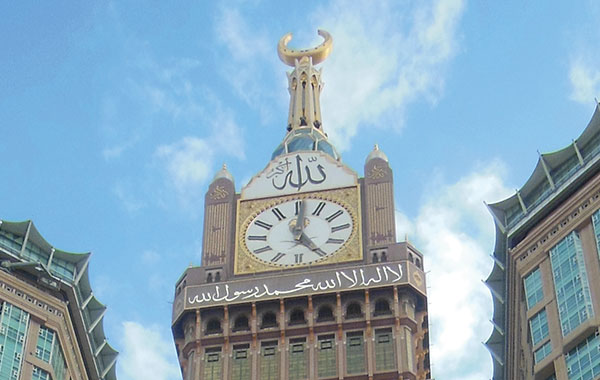
29 July 2019
Since humans first began constructing tall buildings, history has been cluttered with claims of all manner of “highest” records. In this study, we examine those...

31 January 2019
CTBUH Research
In 2018, 143 buildings of 200 meters’ height or greater were completed. This is a slight decrease from 2017’s record-breaking total of 147, and it...
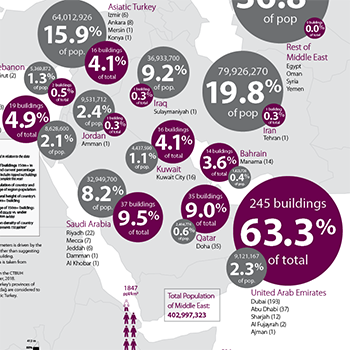
20 October 2018
CTBUH Research
The Middle East region is hosting its first CTBUH International Conference since 2008. In that year, there were 119 completed buildings of 150 meters or...
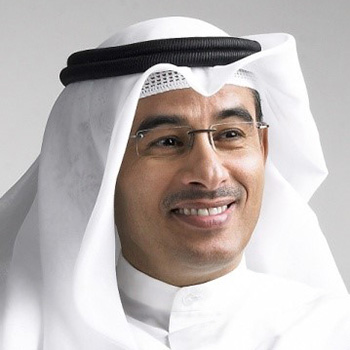
20 October 2018
Mohamed Ali Alabbar, Emaar Properties
In 2008, CTBUH held its Eighth World Congress in Dubai, at which time the world’s tallest building, the Burj Khalifa, was still under construction. His...
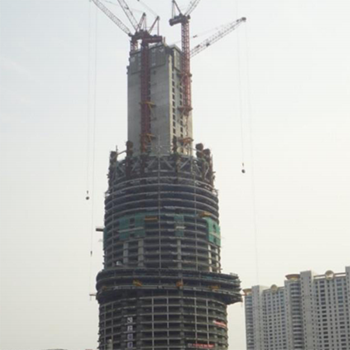
01 September 2018
Kyoung Sun Moon, Yale University School of Architecture
Tall buildings which began from about 40 m tall office towers in the late 19th century have evolved into mixed-use megatall towers over 800 m....
28 November 2018
CTBUH has released a Tall Buildings in Numbers (TBIN) interactive data study examining the relationship between high-rise growth and population in the Middle East.
4 April 2018
CTBUH is pleased to announce that Emaar Properties is supporting the 2018 Conference as Diamond sponsor, and will host the Opening VIP Reception at Burj Khalifa.
12 September 2017
CTBUH partnered with Guinness World Records to identify the commercial building with the fastest elevator speeds and longest vertical runs.
28 August 2017
Officials of Shanghai Tower opened the building's highly-anticipated Summit 632 space, making it the second-highest occupiable space in the world after the Burj Khalifa, Dubai.
5 July 2017
CTBUH Singapore, in coordination with CTBUH Malaysia and CTBUH Thailand, hosted a multi-city seminar on sustainable design in Singapore, Kuala Lumpur, and Bangkok.
16 May 2017
CTBUH Executive Director Dr. Antony Wood recently traveled to Dubai and Jeddah on a fact-finding mission to explore the possibility of holding a conference in the region in 2018.
16 March 2017
The CTBUH, in conjunction with the Chicago Architecture Foundation (CAF), held the first of the four-part “Building Tall” lecture series at the CAF lecture hall.
19 December 2016
Check out the Council on Tall Buildings and Urban Habitat's top stories of 2016 for each month and take a look ahead with the Council’s monthly predictions for 2017.
13 October 2016
The Council is pleased to announce the Top Company Rankings for numerous disciplines as derived from the list of projects appearing in 100 of the World’s Tallest Buildings.
Subscribe below to receive periodic updates from CTBUH on the latest Tall Building and Urban news and CTBUH initiatives, including our monthly newsletter. Fields with a red asterisk (*) next to them are required.
View our privacy policy